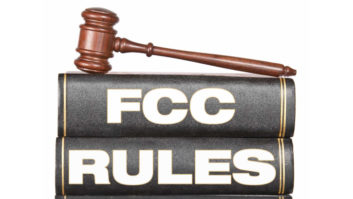 The National Association of Broadcasters said there’s no reason for the Federal Communications Commission to reconsider its decision not to create a new class of low-power FM stations.
The National Association of Broadcasters said there’s no reason for the Federal Communications Commission to reconsider its decision not to create a new class of low-power FM stations.
In a Report and Order earlier this year, the FCC concluded that it would not move to create a new class of 250-watt LPFM stations, known as the LP-250 service.
A formal Petition for Reconsideration subsequently was filed in July by a group of LPFM and NCE community radio engineers. Thy included representatives of Common Frequency and Prometheus Radio Project and five other LPFM operators and engineers.
They complained in their July filing that the FCC did not adequately acknowledge LPFM advocates’ concerns or address numerous sentiments regarding the subject in the final order.
They said that LP-250 would not conflict with the Local Community Radio Act requirement regarding reducing minimum distance separations between LPFM and full-service stations. They said the FCC did not provide sufficient rationale for denying the creation of an LP-250 service.
Rather, they said, the FCC seemed to imply that the LP-250 issue required further study, which the commenters took to mean that the commission intends to open a proceeding in the future to solicit various proposals for stakeholders to contemplate. In addition, such a solicitation would address LPFM operators’ concerns about low-power FM service deficiencies that curtail listener reception.
“The commission has vastly assisted in relief concerning AM broadcasters failing coverage. Shouldn’t commensurate effort be extended to ameliorating LPFM coverage issues? [Plus,] there is certainly a demand for relief concerning LPFM interference/underpower concerns within the station’s 60 dBu contour of many LPFM stations.”
In response, the NAB filed its own recent comments, arguing that there is no reason for the FCC to create another class of service governed by a different set of rules. Moreover, the association said, if an LPFM applicant or station wants to operate a 250-watt radio station, it can apply for a Class A license just like any other entity.
[Read: LPFM Stations Seek Technical Upgrades]
The NAB said the petitioners were only rehashing claims already fully considered. It said the petitioners offered no new information about the burden on applicants of preparing contour studies and ignored the impact on the FCC of having to review such studies.
The association also said that although the text of the LCRA does not specifically cap LPFM power levels, it does prohibit reduction of the minimum distance separations between LPFM and FM stations and that LP-250 supporters have not shown that LP250 service could be consistent with these spacing requirements.
“Petitioners urge the FCC to relitigate its view of the LCRA, but do not offer any additional facts or policy reasons,” the NAB said. “The FCC has repeatedly and consistently spoken on this matter, and while petitioners may disagree with the commission, the FCC’s approach is perfectly valid, thoughtful and requires deference.”
“As [the commenters are] well-aware, the act struck a careful balance between the interests of noncommercial entities for more licensing of LPFM stations with those of incumbent services for interference safeguards,” the NAB said in its comments. “Allowing LPFM stations to more than double their maximum power now, a decade later, would upend the careful balance that stakeholders forged at the time.”
The NAB told the FCC that the group failed to provide new facts or new arguments, which is a necessary part of the process to reconsider the decision.
Comments on the issue can be viewed within the FCC’s ECFS electronic database using Docket 17-105 or 19-193.






